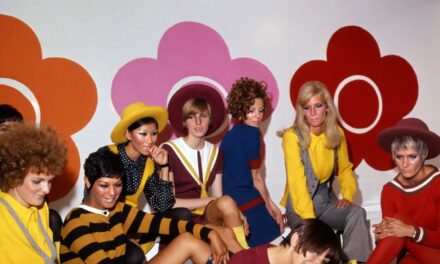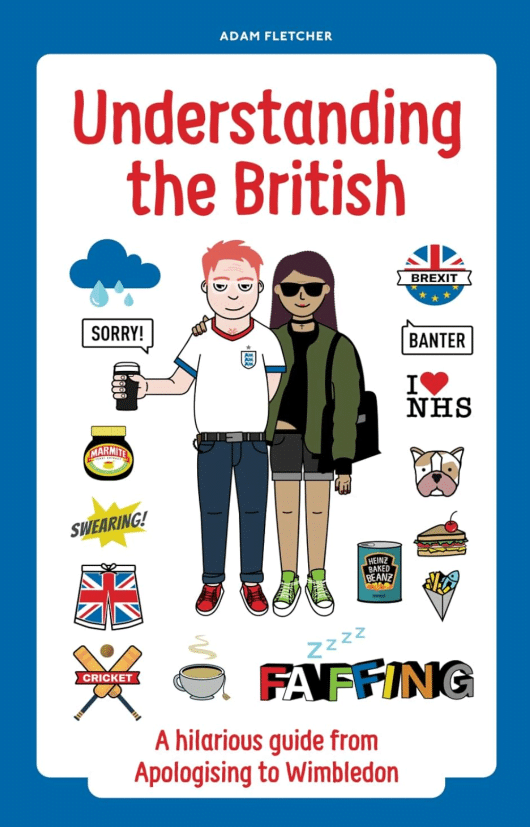The year 1985 proved to be a rollercoaster of both triumph and tragedy for Britain. As the economy prospered and the cultural prominence of the UK surged, the nation also grappled with devastating disasters and unrest that shook the public. It was a bittersweet year of extremes – moments that lifted Britain’s spirits to great heights were often followed by events that dashed them.
From the euphoria and goodwill of Live Aid to the Heysel Stadium tragedy that killed 39 fans, 1985 delivered emotional whiplash. Politically, Margaret Thatcher battled the miner’s unions to submission but faced ongoing dissent in Northern Ireland after the Anglo-Irish Agreement. Musically, British pop soared behind Dire Straits and Madonna while competitive pride was restored via Sebastian Coe’s mile record and England’s Five Nations rugby victory.
The year exemplified Britain’s complexity – for each achievement, a sobering price was paid. But 1985’s mix of innovation, conflict, celebration and grief would come to define the characteristic spirit of the nation in that pivotal decade. By grappling with this schizophrenia of fortune versus misfortune, Britain only emerged stronger at the end. The proximity of joy and pain made 1985’s moments unforgettable, for better or worse.

Live Aid Concerts Raise Funds for Africa
On July 13, 1985, dual historic benefit concerts titled Live Aid were simultaneously held at London’s Wembley Stadium and Philadelphia’s JFK Stadium, uniting some of music’s biggest stars for a common humanitarian cause. Organised by Bob Geldof and Midge Ure to raise funds for Ethiopian famine relief, Live Aid was globally televised and watched by an estimated 1.9 billion people across 150 countries – a record audience at the time. The concerts raised over £150 million, establishing pop culture’s potential as a platform for altruism. Live Aid embodied the promise of global connectivity through media, bridging continents for compassion.
The seeds for Live Aid were planted a year prior, when Geldof saw a BBC report on the catastrophic 1983–1985 famine in Ethiopia. Geldof, lead singer for the Boomtown Rats, resolved to do something to help. He enlisted Scottish musician Midge Ure, and together they swiftly organised the massive charity concert event. As a televised spectacle, Live Aid harnessed the reach of media to raise awareness and funding from citizens worldwide to aid Ethiopia.
On the morning of July 13, Wembley Stadium was filled with over 70,000 attendees. The London concert was opened by Coldstream Guards playing the “Royal Salute”, followed by Status Quo kicking off the rock performances. The all-star lineup featured Queen’s energising 20-minute set, David Bowie’s emotional “Heroes” duet with Thomas Dolby, The Who storming through their classics, Elton John wowing the crowds with flamboyant showmanship, Paul McCartney leading an “All You Need Is Love” singalong finale, and many more.
Meanwhile in Philadelphia, over 89,000 fans packed JFK Stadium. The American lineup included searing sets from Joan Baez, Black Sabbath, Madonna, Santana, Judas Priest, Mick Jagger, and others. Geldof himself performed “I Don’t Like Mondays” in both locations, unifying the transatlantic events. The concerts were globally linked by satellite to provide dual perspectives.
During the 16-hour concerts, viewers were bombarded with disturbing footage from famine-stricken Ethiopia to drive home Live Aid’s urgent cause. The images of starving families contrasted starkly with the glamour onstage, contextualising the privilege and duty of helping. Live performances alternated with segments educating audiences on donating to relief via call centres. Over £1 million was raised per hour.
The production pulled off a monumental logistical feat for its era. A transatlantic Concorde flight enabled artists like Sting and Phil Collins to perform in both London and Philadelphia on the same day. The concerts required eight satellite links, 500,000 watts of amplification, and multiple generators to support the stacked lineup. Despite some technical glitches, the concerts proved an enormous success and media spectacle.
Queen’s legendary 20-minute set stole the show, with 72,000 Wembley Stadium attendees clapping and stomping in unison to “Radio Ga Ga.” Freddie Mercury relentlessly energised the crowd, later leading a poignant rendition of “Is This the World We Created.” The band’s performance was universally considered one of Live Aid’s highlights.
Other memorable moments came during Elton John’s foot-stomping medley, when George Michael enthusiastically joined Kiki Dee for a soaring duet on “Don’t Go Breaking My Heart.” Phil Collins’ transatlantic Concorde flight enabled him to remarkably play both venues, underscoring the connectivity between the UK and USA events.
On the organisational end, Geldof navigated considerable logistics, politics and personalities to make Live Aid happen. Securing artists meant relentless phone cajoling amidst touring schedules. Transporting equipment to Africa post-concert presented further challenges, given rampant corruption and bureaucracy. But Geldof’s passion ultimately overcame all obstacles through sheer will and audacity.
The concerts represented Live Aid’s genesis, but its humanitarian efforts continued for years after. A “Live Aid 2” marathon fundraiser was staged in 1989. In 2005, Geldof organised Live 8 to pressure G8 leaders on African debt relief. He was ultimately successful, proving that Live Aid’s legacy stretched far beyond one day.
Socially and culturally, Live Aid revolutionised conceptions about the role major benefit concerts could play in galvanising pop culture for humanitarian good. It led to countless successor concerts, from Farm Aid to the Tibetan Freedom Concerts. The model of leveraging celebrity influence for fundraising was firmly established, from George Harrison’s 1971 Concert for Bangladesh onwards.
On the music side, critics concurred that Live Aid’s frenetic pace made for less cohesive sets than normal concerts. But the electrifying performances still shone regardless thanks to the palpable idealism and emotion pulsating through the gatherings. No one could deny the moving sight of hundreds of thousands moved by music and holding lighters aloft in solidarity.
Four decades later, Live Aid’s impact remains astonishing – the sheer scale of its reach and donations amassed, its innovative use of media and technology for philanthropy, and the template it created for star-studded charity initiatives. The concerts showed that pop culture could meaningfully bridge global divisions when harnessed for altruism, awakening society’s collective conscience. That remains Live Aid’s enduring legacy.

Dire Straits Release “Money for Nothing”
In 1985, British rock band Dire Straits unveiled their iconic single “Money for Nothing” featuring a groundbreaking CGI music video which became a major worldwide hit. Taken from their smash album Brothers in Arms, the cheeky song provided wry commentary on the fledgling music video culture of MTV, sung from the perspective of a blue-collar appliance deliveryman watching music videos and lambasting the rockstar lifestyle.
With its incredibly catchy guitar hook, distinctive riff, and innovative animated music video, “Money for Nothing” shot to number one on the UK Singles Chart and Billboard Hot 100. The ambitious video incorporated early 3D computer animation and graphics using Silicon Graphics technology, which replicated the rudimentary blocky look of early video games while portraying the band members against a stark computerised background. This pioneering use of CGI visual effects was unprecedented in the music world at the time, effectively ushering in a new era of computer animation being creatively utilised for music videos.
The song’s unique concept and perspective, irresistibly hummable guitar lick, Mark Knopfler’s slick production, and its futuristic CGI-driven music video all aligned into a zeitgeist-capturing pop culture phenomenon that dominated airwaves globally. Propelled by its crossover appeal, “Money for Nothing” went on to win the 1986 Grammy Award for Best Rock Performance by a Duo or Group with Vocal. It also catapulted Dire Straits’ album Brothers in Arms to the top of the charts on both sides of the Atlantic, becoming one of the world’s best selling albums of all time.
Overall, “Money for Nothing” memorably encapsulated the excess and materialism associated with 1980s popular culture, while also serving as an innovative pioneer that showcased the groundbreaking creative potential of CGI technology in the burgeoning digital age. Its legacy as a radio staple and video game-changer endures today.

Madonna Becomes Star in UK
1985 marked the year that American pop sensation Madonna truly conquered the British music scene, skyrocketing to fame through a string of catchy dance-pop hits including “Into the Groove”, “Holiday”, and “Crazy for You”. Although she had already achieved success in her home country, this was the year Madonna became a household name and cultural phenomenon in the UK.
Madonna’s infectious dance-pop sound, daring fashion sense, and shrewd grasp of provocative image-making dazzled British audiences and critics alike. Propelled by chart-topping, radio-dominating hits from her Like A Virgin album, she garnered acclaim for bringing club culture into the mainstream with an edgy, liberated perspective.
Tracks like “Angel”, “Dress You Up”, and “Material Girl” exuded sophistication and urbanity for British listeners. However, her most popular British smash in 1985 was “Into the Groove”, which was included on the soundtrack to the film Desperately Seeking Susan. The song shot to number one on the UK charts, emphatically cementing her stardom.
Madonna’s meteoric rise was boosted by her provocative, avant-garde music videos which offered British audiences a vision of fashion-forward femininity and dance-centred escapism. Her video for “Like A Virgin” in particular caused both controversy and sensation.
Beyond the singles, Madonna’s Virgin Tour also conquered the UK as she performed to frenzied sold-out crowds that shrieked her name. Her presence resonated with British female youth who connected with her boldness. For many, Madonna’s unapologetic spirit epitomised girl power and cool sophistication.
By the end of 1985, Madonna had won the hearts of Brits through her cutting-edge sound, style, and shameless confidence. She established herself as a cultural icon and exemplar of modern femininity who spoke to British women. With her crossover UK chart dominance, Madonna now stood alongside American peers like Prince and Michael Jackson in the pop hierarchy. Her British success kicked off an era where she would reign as global pop royalty throughout the late 80s and beyond.
Entertainment
EastEnders Premieres on BBC
On February 19, 1985, the long-running BBC television soap opera EastEnders premiered, chronicling working class life in the East End of London. Created by producer Julia Smith and script editor Tony Holland, it aired on BBC One and soon became a ratings juggernaut. Known for its true-to-life grittiness and dramatic storylines reflecting contemporary Britain, EastEnders would go on to become one of the most beloved and successful soap operas in British television history.
The first episode garnered over 17 million viewers as it introduced the fictional Albert Square community and iconic characters like the Fowler family, Ethel Skinner, Lou Beale, and the local pub team of Angie and Den Watts. Rooted in realism, EastEnders revolutionised British soap operas through its focus on social issues like teen pregnancy, racism, unemployment, crime, and substance abuse that affected urban working classes in 1980s London.
While derided as “soap opera” by some critics initially, EastEnders soon gained legitimacy through its thoughtful storytelling and screenwriting. By chronicling the triumphs and struggles of everyday people in a resonantly authentic way, it touched UK audiences across all demographics. Its characters like Dot Cotton and Michelle Fowler became household names.
By tackling controversial issues like AIDS, mental illness and homosexuality in a groundbreaking yet accessible manner, EastEnders paved the way for provocative storylines in soap operas. Its emotional yet entertaining approach to social issues provided a unifying forum for national conversation and awareness.
With its instantly recognisable theme song and gritty aesthetics, EastEnders anchored BBC One as a ratings powerhouse. By 1990 it had become the most watched television show in the UK, reflecting its cultural impact. Its nuanced portrayal of working class communities also countered many stereotypes.
For its compelling characters, acting and iconic story arcs like “Sharongate”, EastEnders garnered critical praise as well respect from the public. Its huge commercial success spawned popular merchandise and made stars of its cast. Over 30 years later, it remains a flagship BBC program and a definitive British soap opera.

Back to the Future Delights Moviegoers
The time-traveling comedy Back to the Future was released in 1985, becoming a pop culture phenomenon that enchanted moviegoers worldwide as the highest-grossing film of the year. Directed by Robert Zemeckis and produced by Steven Spielberg, it starred Michael J. Fox as Marty McFly, a teen accidentally sent back to 1955 in a time machine invented by his eccentric scientist friend Doc Brown (Christopher Lloyd).
Filled with humour, adventure and clever takes on time travel paradoxes, Back to the Future charmed audiences with its blend of science fiction, action, romance and retro 1950s nostalgia. At its core was the likeable everyman charm of Michael J. Fox, who had to convince the 1955 version of his parents to fall in love to ensure his future existence. The clever scripts yielded countless memorable lines and scenes, such as Marty reinventing rock n’ roll by playing “Johnny B. Goode” at a dance.
Back to the Future became 1985’s sleeper hit through its crowd-pleasing mix of excitement, comedy and heart. It spent 11 consecutive weeks as the #1 film at the US box office and earned nearly $387 million worldwide, becoming 1985’s top-grossing movie. It resonated with audiences across demographics, winning over both teens and adults with its blend of youthful spirit, romance and nostalgia.
Critically acclaimed as well, Back to the Future earned the Hugo Award for Best Dramatic Presentation and the Oscar for Best Sound Effects Editing for its pioneering audio work. The iconic DeLorean time machine entered pop culture lore, as did composer Alan Silvestri’s unforgettable anthem.
Back to the Future kickstarted one of cinema’s most popular and profitable franchises, spawning two successful sequels and helping define the 1980s as a vintage decade in Hollywood. For its wit, originality and universal appeal, this sci-fi comedy milestone remains one of the most beloved films in pop culture history.
James Bond View to a Kill released
In 1985, the long-running James Bond film series continued with A View to a Kill, the 14th entry and final outing for actor Roger Moore in the role of 007. With Moore retiring, the film marked the end of an era that saw him become the longest-serving and most prolific Bond.
A View to a Kill featured Bond unravelling a plot by the villainous Max Zorin (Christopher Walken) to destroy Silicon Valley. It co-starred Grace Jones as the memorable henchwoman May Day, as well as Patrick Macnee and Tanya Roberts. It became one of 1985’s major box office hits.
The 57-year-old Moore brought his trademark humour, charm and gravitas to his final performance as James Bond amidst the film’s iconic action sequences. While critics felt he showed his age, Moore remained popular with audiences. Co-star Christopher Walken earned praise for his psychotic turn as villain Zorin, bringing a ruthless but quirky flare.
The film featured scintillating stunts and exotic locales ranging from the Eiffel Tower and Golden Gate Bridge to horse racing and an epic blimp finale. While praised for its imaginative action, critics noted some lapses in the script and plausibility. But the film proved another crowdpleaser for the lucrative Bond franchise.
A View to a Kill became the #1 film at the box office following its May release, earning over $152 million worldwide. The title track by Duran Duran became a #1 smash hit around the world, making it one of the most successful Bond themes.
With Moore’s retirement, the hunt was on for a new Bond. After a lengthy search, Pierce Brosnan was first tapped for the coveted role in The Living Daylights, but was prevented from taking it by his TV contract for Remington Steele, in one of the most notorious missed casting opportunities.
Ultimately Timothy Dalton would next step into 007’s tuxedo as the third Bond after Connery and Moore. But Moore signed off on a high note with this blockbuster final outing, cementing his place as a fan favourite and one of the most legendary Bonds in the franchise’s history.

Culture
Heysel Stadium Disaster Kills 39
On 29 May 1985, one of the darkest tragedies in British football history occurred at the Heysel Stadium in Brussels, Belgium during the European Cup Final between Liverpool and Juventus. Rioting and charged hooliganism between opposing fans led to a stampede that caused the collapse of a retaining wall, resulting in 39 deaths and over 600 injuries.
The crumbling Heysel Stadium was already deemed unsuitable for the match well beforehand. However, Brussels pressed on with hosting despite clear security flaws. Trouble had been brewing with hours of clashes between Liverpool and Juventus hooligans throwing missiles across divides. Intoxication and antagonism was rife amidst the crammed stadium of 58,000 attendees.
As kickoff neared, Liverpool fans breached a fence separating them from the Juve sections. Seeking escape, Italian fans retreated en masse, resulting in massive overcrowding pressure. A retaining wall in their sector duly collapsed from the Load, crushing many and enabling a lethal stampede. Bodies piled up as fans sought escape, while some died at the feet of those trying to scale the walls.
In total, 39 people lost their lives – with 32 Italian fans, four Belgians, two French, and one Northern Irishman killed in the horrifying melee. Over 600 more were injured, ranging from trampling injuries to severe spinal damage from falling walls. Most deaths were attributed to asphyxiation from compressive suffocation.
In the chaotic aftermath, the European Cup final somehow proceeded for fear of more violence, with Juventus winning 1–0. But the damage was done – Britain’s reputation was severely tarnished and English clubs were banned from European competitions for five years. Liverpool itself was banned for an additional year and 14 of its fans found guilty of involuntary manslaughter.
Extensive investigations revealed a confluence of reckless factors enabling the tragedy – negligent policing and crowd control, decrepit stadium infrastructure unable to contain violent fans goaded by overly aggressive police tactics, and the prevalence of hooligan elements undaunted by consequences.
The UK’s official report urged comprehensive nationwide measures to curb hooliganism. Stadiums were required to meet stricter safety standards. This led to rising ticket prices that deterred some poorer fan elements, while CCTV surveillance became more widespread.
Heysel marked a turning point – English clubs could no longer dismiss hooliganism as a fringe issue. It forced football authorities to reckon with the dangerous culture that had taken root, turning fandom into tribalism. Harsher legal penalties and policing strategy reforms followed.
While hooliganism endures today, Heysel represented its nadir and a catalyst for change. Painful lessons were learned about unsafe facilities and crowd control strategy. Heysel had wide cultural impact too in tarnishing the national game. Two nations bonded by sport were instead divided by mindless violence enabled by negligence. However, slow healing eventually prevailed. On the disaster’s 25th anniversary, captains from both teams laid floral wreaths together in mutual respect.
Unrest Resumes in Northern Ireland
In 1985, Northern Ireland was gripped by a resurgence of violent unrest and political upheaval following the controversial signing of the Anglo-Irish Agreement between the UK and Irish governments. This accord, intended to help bring peace, instead triggered mass protests and civil disobedience from unionists fiercely opposed to Irish influence in Northern Ireland.
The Agreement was signed on November 15, 1985 by UK Prime Minister Margaret Thatcher and Irish Taoiseach Garret FitzGerald. It gave Ireland a formal consultative role in Northern Irish affairs, while confirming there would be no change in Northern Ireland’s status without majority consent. This enraged unionists who felt it enabled the Irish government undue influence over British sovereign territory.
Mass protests were quickly organised by unionist leaders like Ian Paisley. On November 23, over 100,000 unionist demonstrators rallied at Belfast City Hall in unity against the Agreement. Paisley symbolically denounced Thatcher’s “betrayal” by tearing up her photo. Huge marches continued, with work stoppages bringing Northern Ireland to a standstill.
Violence also erupted – in just four days after the signing, over 100 serious injuries were reported from attacks using everything from guns to grenades. The Ulster Volunteer Force assassinated a Catholic bar manager wrongly believed to be a republican activist. A 500-pound bomb detonated at a gas utility office by loyalists caused extensive damage.
Through 1986, strikes and mass civil disobedience continued as hardcore unionist politicians like Paisley refused negotiations. Thatcher remained resolute, inflaming tensions further rather than seeking reconciliation. The unionist campaign to “Smash the Agreement” seemed only to strengthen her stubbornness.
The unrest saw the province polarised. By early 1986, loyalist car firm worker Colin Baxter went on a violent rampage, attacking civilians in the mistaken belief it would halt the Agreement. In the aftermath, thousands attended counter rallies expressing support for peace and opposition to violence from all sides. But animosity persisted.
The fierce unionist resistance failed to force repeal of the accord, but compelled some renegotiation. A 1987 amendment required the Irish government to better explain its role and explicitly guaranteed Northern Ireland’s status could not change without public backing through a referendum. This eased some unionist concerns about being coerced into a united Ireland.
By late 1987, mass protests had died down and an uneasy stability resumed. But the Anglo-Irish Agreement had an enduring impact – it further divided the nationalist and unionist communities, sowing distrust of the UK government among loyalists. The episode demonstrated that seemingly well-intentioned steps for peace could backfire and worsen matters if handled recklessly or without full consensus.
In retrospect, the Agreement failed to kickstart the intended transformation towards conciliation and power sharing. But it remained symbolically important in enshrining Ireland’s rightful place at the table in discussing Northern Ireland’s fate. The turbulent unrest it sparked served as another painful lesson that peace could only come through inclusion, not imposition.

Scientists Discover Buckminsterfullerene
In 1985, a breakthrough discovery in chemistry was made when British scientists identified a spherical molecule composed of 60 carbon atoms resembling a soccer ball. This new form of carbon became known as Buckminsterfullerene, the first fully identified structure belonging to the fullerene chemical family.
The discovery was made serendipitously by Harold Kroto, Robert Curl and Richard Smalley at Rice University in Texas. Using specialised laboratory laser techniques, they vaporised graphite to produce an unexpected carbon formation they termed Buckminsterfullerene for its similarity to architect Buckminster Fuller’s geodesic dome structures.
This perfectly symmetrical sphere with 60 vertices and 32 faces represented a revolutionary new allotrope of carbon with amazing stability. Although previous scientific theory suggested such a molecular shape was impossible, its existence was confirmed through painstaking analysis using cutting-edge spectroscopy and microscopy.
The C60 Buckminsterfullerene discovery opened up entire new realms of chemistry. It enabled the later realization of cylindrical carbon structures called nanotubes, which proved hugely significant in scientific research and technological innovation. The rapid development of fullerenes and carbon nanotube applications led to numerous advances in materials science, electronics, energy storage and biomedicine.
Professors Kroto, Curl and Smalley were awarded the 1996 Nobel Prize in Chemistry for their pioneering efforts in characterizing fullerenes. Their seemingly accidental finding expanded humanity’s knowledge of possible stable carbon structures. It marked the starting point for the whole field of nanotechnology research into manipulating matter on a molecular scale.
The iconic soccer ball shape of Buckminsterfullerene soon permeated popular culture as a visual symbol of scientific discovery and innovation. Binding together cutting-edge science and beautiful geometric symmetry, it remains one of the most important chemical breakthroughs of modern times. The seeds planted in 1985 continue reaping rewards for human progress decades later.

Politics
Miner’s Strike Ends in Defeat for Unions
After a bitter year-long standoff, the 1984-1985 UK miner’s strike finally ended in defeat for the National Union of Mineworkers (NUM) on March 3, 1985. The walkout over pit closures and job losses began in March 1984, but eventually collapsed as dwindling coal stocks endured and miner morale faded after 12 arduous months on strike. By staunchly refusing to concede to the union’s demands, Margaret Thatcher’s Conservative government effectively outlasted the miners in a ‘war of attrition’ that dealt a crushing blow to the British trade union movement.
The miners’ strike was a landmark industrial and political clash in 1980s Britain. At its core, the NUM was striving to stop Conservative plans to close 20 coal mines nationwide, which threatened jobs and communities. When the year-long strike collapsed, the NUM had failed to save most pits while over 11,000 miners had already lost their jobs amidst the closures.
The defeat significantly weakened the power of trade unions in Britain, a chief goal of the Thatcher government. The unions’ solidarity crumbled in the face of unyielding government resistance backed by police and legal pressure. For Prime Minister Thatcher, the dispute was framed as a decisive struggle to curb union influence in politics, which she derided as ‘holding the nation to ransom.’
After the notorious “Battle of Orgreave” clash between miners and police, arrests and heavy policing took a toll on picketers. By late 1984, many miners felt demoralised and physically exhausted as hardships mounted with no income. Miner resolve was tested as the Thatcher government refused negotiations and ramped up political pressure.
Despite enjoying wide public sympathy initially, media coverage grew increasingly unfavourable towards the strike as violence erupted. Rifts widened between miners after the NUM controversially refused to hold a ballot, fearing vote results. UDM leader Roy Lynk formed a breakaway union that weakened solidarity.
Meanwhile, the government had shrewdly stockpiled coal and converted power stations to withstand a lengthy strike. Coal imports were increased while policies like fuel rationing conserved stock. These measures left the NUM with diminishing leverage as time passed, while the government simply waited them out.
In areas like Nottinghamshire, many miners defied the NUM and returned to work, relying on police protection from picketers. By February 1985, around 13,000 miners or over 25% of the workforce had resumed work, bolstering coal production as pits reopened.
Faced with dwindling options, the NUM eventually called off the strike on March 3, 1985 after a decisive ballot – with 91% voting to return to work without a deal rather than prolong the fruitless dispute. The miners had become financially and emotionally drained after sustaining the strike for a full year without concessions.
NUM leader Arthur Scargill initially vowed to continue fighting, but the strikers’ will was broken. Even protracted strikes in the early 1970s had only lasted around 2 months historically. Few imagined NUM resolve enduring 12 months amidst faltering solidarity and family hardships.
In returning to work after an entire year, the miners suffered a devastating setback. The lengthy strike caused Britain to endure major coal shortages that demonstrated the urgency of transitioning from fossil fuels. It spurred the closure program that would decimate the industry over the next decade.
The strike’s failure also dealt a crippling symbolic blow to the power of trade unions and marked a watershed triumph for Margaret Thatcher’s government in eroding union influence. Her uncompromising stance was validated. The unions had gambled on another 1974-esque vision victory but catastrophically misjudged the political landscape.
For the embattled mining communities, the strike left a legacy of lasting hardship and bitterness. The lost year of wages had severe financial consequences, while defeat after such sacrifice was emotionally crushing. But the solidarity of the women’s support groups proved a spot of light in the darkness.
Ultimately neither side emerged untouched, communities faced destruction, police tactics damaged reputations, and government attitudes hardened. But the miners suffered most, as an industry and way of life neared extinction. The strike’s defeat marked a decisive turning point in diminishing their power to combat pit closures and job losses.

Bradford Football Stadium Fire Kills 56
On May 11, 1985, one of the deadliest sporting disasters in British history took place at Valley Parade, home of Bradford City football club. A horrific fire broke out in the main stand at the stadium, rapidly spreading and engulfing spectators. Chaotic scenes ensued as smoke and flames caused panicked rush for the exits. By the time the blaze was under control, 56 people had tragically lost their lives. Over 250 more were injured in the calamity.
The fire occurred during Bradford City’s Football League Third Division match against Lincoln City, with around 11,000 fans in attendance. At 3:40pm, flames were spotted at the back of the 75-year old main stand, likely due to a discarded cigarette or match setting alight accumulated rubbish below the seats.
The old wooden roof and flooring enabled the blaze to swiftly spread upwards within minutes. Billowing smoke obscured vision as terrified fans rushed frantically towards the exits. With fire extinguishers proving inadequate, the situation rapidly escalated into mass panic.
Many were trampled underfoot amid the chaos, others overcome by smoke inhalation. Some attempted to escape by jumping down to the pitch, resulting in injuries. The stand’s roof eventually collapsed as the inferno raged, while the blaze spread to engulf adjoining stands too. Players rushed to help evacuate children and the injured from the stands.
Though firefighters arrived on scene within four minutes, the fire proved intensely difficult to control and extinguish. The entire main stand was destroyed, leaving only charred debris. 56 people were declared dead at the scene or later succumbed to severe burns and smoke inhalation. Over 250 more sustained injuries ranging from serious burns to broken bones suffered in the panicked escape. It marked one of the deadliest fires ever at a sports venue.
A subsequent inquiry attributed the appalling death toll to the stadium’s outdated infrastructure and lack of rigorous safety standards. Built mainly from wood, the 57-year old stands had no sprinkler system and contingency exit plan. The roof and flooring were lined with bitumen and combustible materials that enabled lightning spread of flames.
The inquiry slammed the club’s negligent safety standards and lack of fire prevention measures. Recommendations were made to mandate fireproof construction and sprinkler systems in stadiums, remove flammable materials, and restrict smoking.
The disaster represented a wake-up call regarding the dire risks of outdated sports venues lacking adequate fireproofing and clearly marked exits. It led to tighter safety requirements and renovations of old British stadiums like Valley Parade to modern standards.
In the disaster’s aftermath, Bradford City received overwhelming community support and solidarity. Donations poured in along with facilities from other clubs to complete their season. Thousands attended memorial services for the deceased. Supporters soon raised over £3.5 million to rebuild the damaged stadium.
The human toll was immense – families lost fathers, sisters, sons. Youngest victim Andrew Fletcher was just 11 years old. But some comfort emerged from the community’s collective grief as Bradford residents united in resolute solidarity and resilience. Football rivalries were set aside in the spirit of mutual compassion.
While the disaster left deep scars, Bradford City rebounded admirably from the tragedy. Valley Parade reopened in late 1986 after renovations. A memorial honouring the 56 victims was erected. The club progressed to promotion in 1996 amidst renewed community spirit.
The Bradford stadium fire remains Britain’s deadliest sports venue calamity. Coming barely weeks after the Heysel disaster, it marked 1985 as a year of unprecedented English stadium tragedies. For its frightening toll and lasting impact on stadium safety standards, the fire’s legacy was unforgettable. But so too was the spirit of Yorkshire.
MPs Receive Pay Rise to £24,250
In 1985, Members of Parliament voted to increase their own annual salaries from £14,750 to £24,250, sparking controversy across Britain. The 64% pay hike was vocally opposed by citizens and press alike as excessive amidst recession and high unemployment.
Prime Minister Margaret Thatcher had advised a more modest rise to £20,000. But the House of Commons disregarded public opinion and overwhelmingly passed the substantial salary increase for themselves. Tabled by Labour MP Allan Roberts, the measure was approved 323 to 252.
Furious public backlash erupted as the significant pay rise was perceived as greedy and out-of-touch when British workers faced job losses and pay freezes. The tabloid press condemned it as a money grab by elites, dubbing it the “Wages of Greed” bill. Striking miners decried the MPs awarding themselves lavish wages while blue-collar livelihoods were jeopardised.
With Britain gripped by austerity and recession, citizens were appalled at such extravagance by their elected representatives. The public vented outrage in letters and calls to MPs over this cynical self-reward amidst national hardship.
Stung by criticism, some MPs pledged to donate their raise to charity. A few tried unsuccessfully to reverse the measure, but the substantial pay increase stood nevertheless. Public anger grew as many MPs defiantly defended the salary hike as bringing politician wages in line with other professions.
The controversial episode reinforced public perception of MPs as an out-of-touch elite class more interested in self-enrichment than representing the common citizen. Labour in particular was seen as abandoning its working class base.
While MPs contended generous wages were needed to attract qualified talent, the extravagant hike at the people’s expense during a recession smacked of elitism and cronyism. It became a symbol of the growing disconnect between elected officials and the electorate they purported to serve.
The divisive salary increase left a damaging political legacy and public distrust of MPs that lingered for years. It remained a cautionary tale of how politicians often reap the rewards while the people bear the pain.

Sports
Nigel Mansell Finishes Formula One Season in 3rd
The 1985 Formula One World Championship marked a breakthrough year for British racing driver Nigel Mansell, as he claimed his first two Grand Prix victories en route to a career-best 3rd place finish in the season standings.
Driving for the Williams team, Mansell proved a tenacious force on the track against legendary rivals like Alain Prost and Ayrton Senna. Though the season was dominated overall by Prost who clinched his first World Championship, Mansell emerged as a rising star and fan favourite.
The defining moment came at the European Grand Prix in October, where Mansell overcame fuel pressure issues to claim his first ever Formula One victory. One month later, he thrilled British fans by winning the Grand Prix finale at Adelaide, capping off the season in triumph.
Overall, Mansell recorded five podium finishes in 1985 including the two victories. His aggressive driving style and refusal to be intimidated by rivals both endeared him to fans and rankled competitors. Off the track, his candid demeanour and pride in being British further bolstered his popularity.
Though 1985 did not result in the championship, Mansell established himself as a tenacious contender and the greatest British F1 driver since James Hunt’s heyday. His two Grand Prix victories provided momentum leading into 1986, hinting at greater success to come.
The 1985 season proved a watershed year in Mansell’s career. He had shown glimpses of promise since entering Formula One in 1980, but now consistently competed at an elite level. The boyhood dream of winning a race was finally fulfilled.
Nigel Mansell’s breakthrough 1985 performance marked the beginning of his transformation into one of Britain’s greatest ever Formula One drivers. Over a 15 year career, he would go on to claim 31 victories and the 1992 World Championship title in a span filled with triumphs and memorable moments for British motorsport fans.
1985 was a year of both soaring highs and gut-wrenching lows for Britain. On one hand, the nation’s spirits were lifted by inspirational cultural events like the star-studded Live Aid concerts. However, Britain also endured terrible disasters and tragedies that broke hearts and dampened optimism. Ultimately, 1985 proved a poignant year of contrasts.
On the positive side, Live Aid brought together top music stars like Queen, U2 and David Bowie to raise funds for African famine relief in a globally televised mega-event. The epic Wembley Stadium concert embodied hope through humanitarian unity. Musically, 1985 saw Britain lead the way with thriving pop and rock acts like Phil Collins, Wham! and Dire Straits dominating charts worldwide.
But cruel tragedies also struck in 1985 that shook Britain to its core. 56 spectators perished in the horrific Bradford stadium fire, while 39 died in the Heysel disaster involving English football fans in Brussels. These two devastating events marked 1985 as a profoundly bleak year for British sport.
The year saw further heartbreak when an IRA bomb killed 5 at a barracks in Yorkshire – just one incident amidst renewed unrest in Northern Ireland following the divisive Anglo-Irish Agreement. Sectarian tensions soared, showing peace remained far off.
However, some solace emerged from arts and culture. The soap opera EastEnders premiered in 1985, capturing the public imagination with its portrayal of London life. At cinemas, future classic Back to the Future delighted moviegoers. The year proved a landmark one for CGI in music videos through Dire Straits’ innovative “Money for Nothing”.
Royalty brought joy when Princess Diana gave birth to a second son, Prince Harry, extending the royal family. But hardship prevailed with the yearlong miner’s strike ending in defeat and communities facing devastation. Unemployment remained rampant.
So 1985 left a complex legacy – one where hope and tragedy were intertwined. While Live Aid and artistic triumphs lifted spirits, Britain also grieved those lost to disasters. The year exemplified both the strengths and frailties of the human condition. But in the end, the nation’s enduring spirit and communal compassion shone through the darkness.















